Building the Emerald City
For baby doll Dorothy in Graham Rawle’s version of The Wizard of Oz, home is an elaborate set made from containers and Christmas decorations, populated by a ratty toy lion and a balsa-wood Scotty dog.
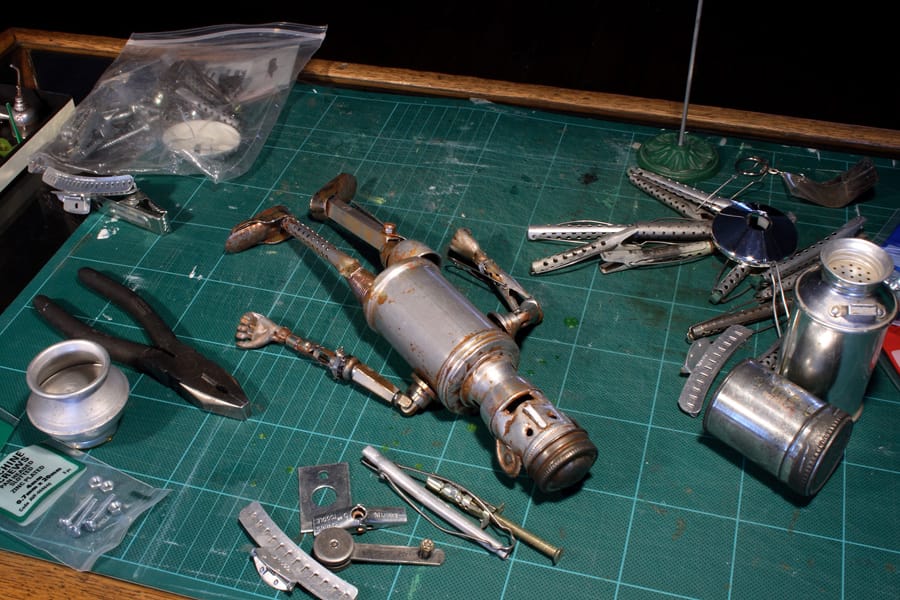
Interview by Nicole Pasulka
So, why The Wizard of Oz?
It’s such a great story—a deceptively simple tale that has incredible psychological depth so it works on a number of levels. Dorothy’s journey is really about a personality that’s trying to become complete. At its core it holds an important life lesson: that the things we yearn for or the qualities we think we lack are often already part of us, but we invariably need to go on the journey to make this discovery. Continue reading ↓
All images used with permission, © copyright the artist, all rights reserved.
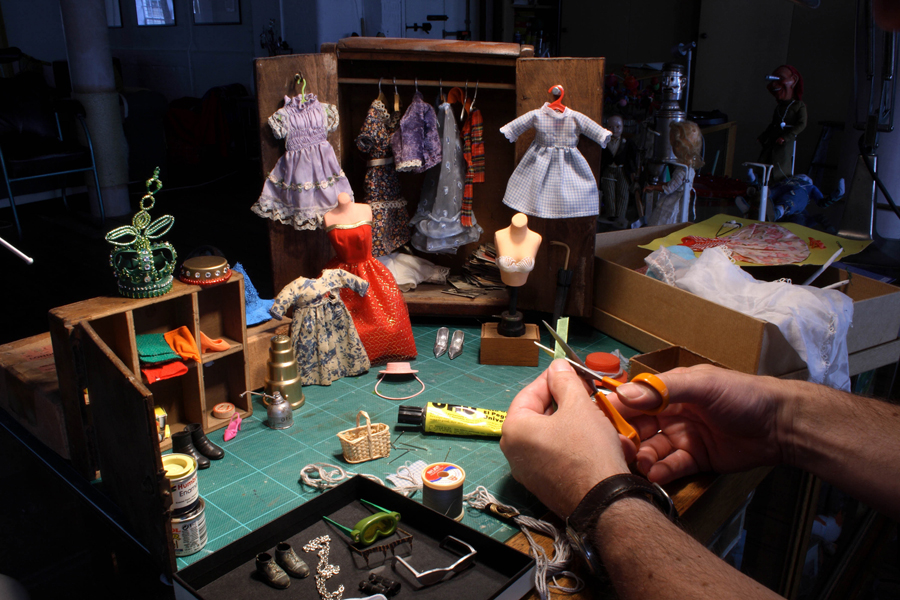
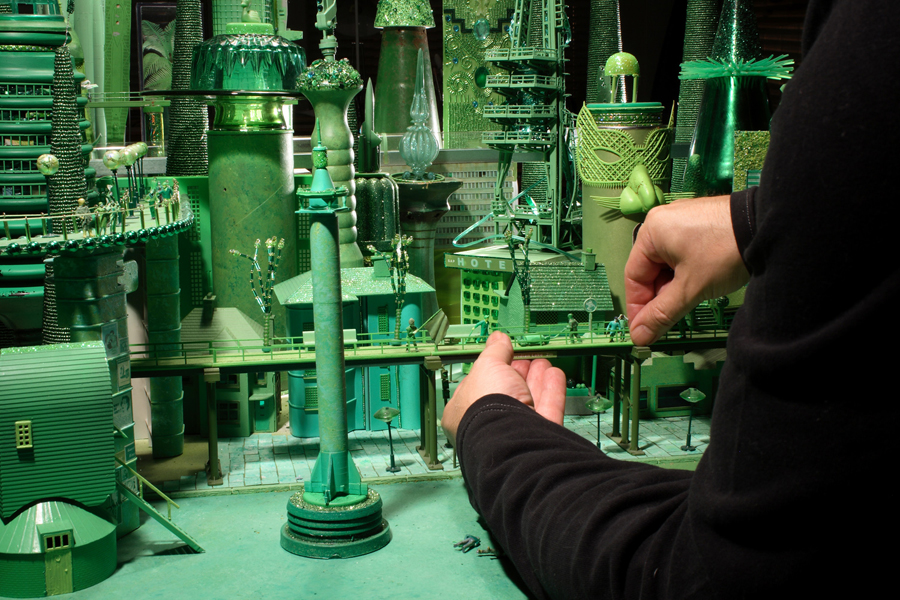
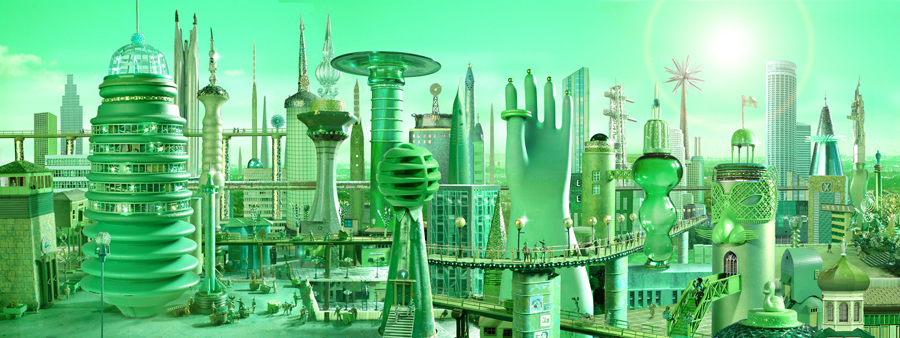
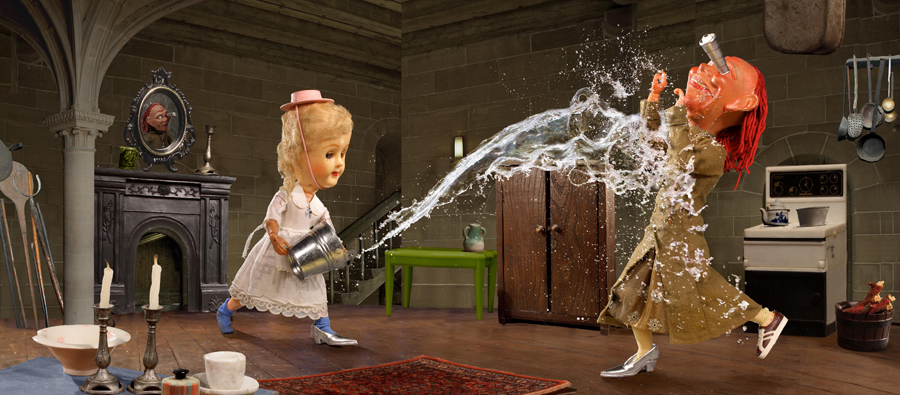
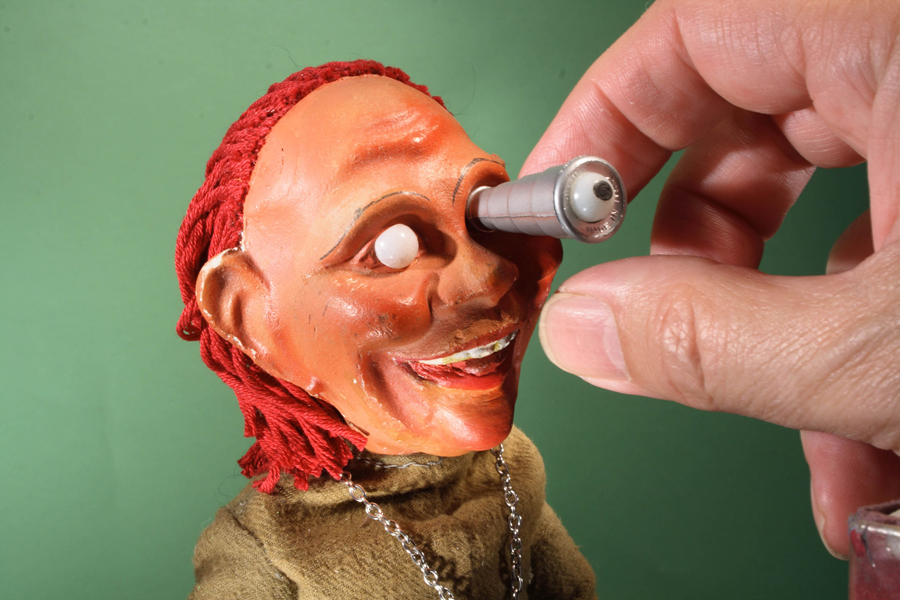

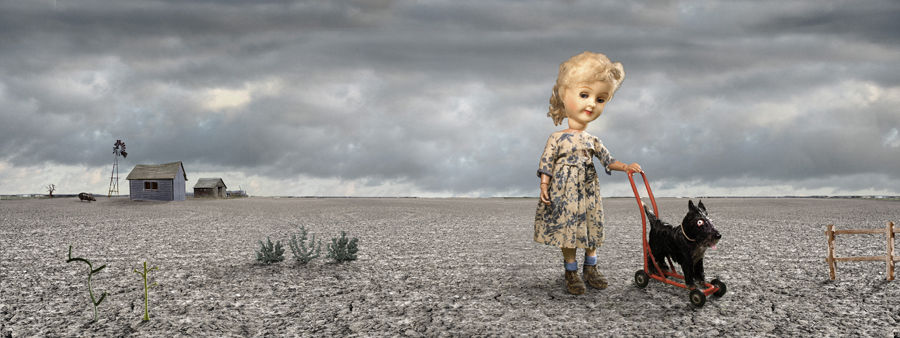
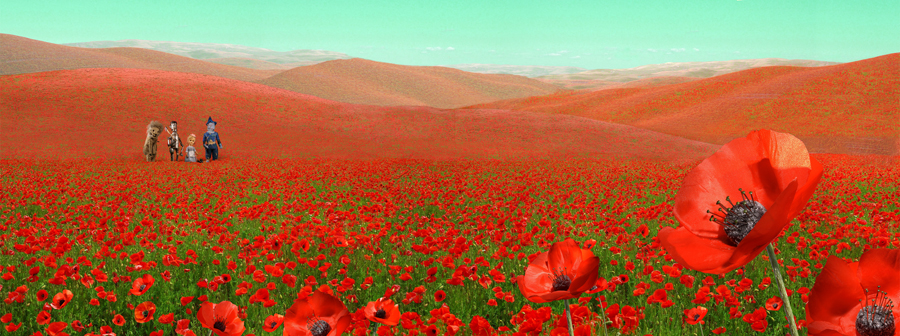
Interview continued
With the pastiche quality of your images and the playfulness, The Wizard of Oz seems well connected to your previous book, Woman’s World. Do you see similarities between these projects?
Woman’s World is a novel I created using around 40,000 fragments of found text snipped from women’s magazines from the early 1960s. These pieces were then reassembled on the page to tell an entirely new story. The project took five years and for me reinforced the notion that the constraints of an exercise force you to become more inventive. It’s inherent in collage, and because I generally work in this way, I suppose there are bound to be similarities in the outcome, but for me the process of creating The Wizard of Oz was quite different because I’d never illustrated someone else’s book before.
Working with an existing text—I used L. Frank Baum’s 1900 original—demanded a different approach. Although my version of Oz is a reinterpretation, I wanted to remain loyal to the original story. My vision comes out of trying to best serve the story, not to impose my personality on it. Having said that, I sometimes found loopholes in order to introduce ideas or characteristics I thought were important. Baum doesn’t say that Dorothy’s dog, Toto, is a push-along toy on wheels, but he doesn’t say that he isn’t, either.
How did you come up an image for each picture?
The process is very like making a movie, or a still from a movie, but with everything in miniature. First I would think about what we needed in the scene and how best to show it (where to place the camera). Then it’s about composition, lighting, atmosphere, and so on. It’s mostly about getting the right feel to the picture, and much of that is instinctive.
Has the movie The Wizard of Oz influenced your version?
One of the things I love about the look of the movie is that it’s clearly all a set. And even though the scenery is fantastically inventive and the matte painting is skillfully done, you know it’s not real: the flowers are made of painted paper and the yellow brick road ends ‘round the corner just off camera. It’s this hand-made fabricated quality I wanted to get in my pictures. It’s a magical world so it shouldn’t look too real. If MGM had decided to shoot the poppy field scene on location, it would have killed the magic because it would suddenly look like actors in costume in a field. The level of reality in the scenery has to match that of the characters.
How much time and materials went into making one of the shots?
It varied. Some took about a week, others considerably longer. I spent ages working on the set for the Emerald City. The buildings are made out of a variety of food containers, household items, plumbing accessories, Christmas decorations, and bits of old modeling kits, all painted green and sprinkled with glitter and fake gems. After several months, and an incredibly complex lighting set-up, I had a picture, but it just didn’t feel right so I started all over again. Initially I had photographed the whole thing as one big diorama, but later decided to light and shoot each building separately and assemble the cityscape as a digital image. I think by the end I had nearly 200 Photoshop layers.
So how long did the whole book take?
It took two years in all. It shouldn’t have taken so long, but I spent most of the first year testing, experimenting, and researching. And making a lot of mistakes. Some of the characters took a while to get right. Toto, for example, had two previous incarnations before I finally decided to put him on wheels, and the Cowardly Lion spent the first part of the project wearing big 1970s platform shoes. It was funny, but it wasn’t right.
I saw on your web site there’s going to be an animated trailer.
Yes, the trailer is finished now and I’ve just put it up on my web site. It’s been hugely pleasurable. It’s my first venture into animation but I worked with a very clever man, Pete Mellor, who managed to create magical movement from my flat 2-D images. Most of it is done digitally, but we were very careful to retain the unpolished hand-made feel of the book.
Did you always plan for Dorothy to be this oversized baby doll in the photographs?
Originally I planned to photograph a real little girl, or at least her head, which would then be stuck on to the doll’s body—it’s how the wizard and the good witch of the north are created—but I figured it might look too scary. And anyway the doll face works so much better. How would I ever have found a real girl as cute as Dorothy?
Who’s your favorite character in the story?
Dorothy, without a doubt. I searched high and low for the right doll, only to discover in true Wizard of Oz spirit that I already had the perfect doll in my collection. I’d used her (Gloria, as she was then) in a previous book, Diary of an Amateur Photographer. Her body was much too curvy to play Dorothy so I had to replace that, but now she seems so perfect in the part I can only think of her as Dorothy. Maybe she was destined to play the role. I’m also very fond of the Cowardly Lion. I found him in a junk store in Minneapolis and he had just the right look. He’s a wind-up toy and is supposed to growl, but he doesn’t seem to have any teeth and he trembles a lot. His mane is a bit moth-eaten too; he looks like he’s worrying too much. The only problem was that he’s a sitting figure and I wanted him standing, so in each picture I had to create his lower legs digitally.
What are some of your favorite details from the book not included in the movie?
There’s some lovely back story that explains why the Tin Man came to be made of tin, and how the Emerald City is only green because its inhabitants are forced to wear green tinted spectacles. There are some great characters too that never made it onto the screen. The Kiladahs—bear-like creatures with heads of tigers; the Hammerheads—aggressive fighters with hard, flat heads and extendable necks; and the Dainty China People—delicate porcelain folk who are prone to breakage.
What are you working on next?
I’m working on a novel. I actually started it before I embarked on The Wizard of Oz so it’s been simmering away on the back burner for a long time. It’s great to get back to writing. There will be a strong visual element too: a combination of text and image to tell the story. Woman’s World is now being made into a feature film so there’s a possibility this one might end up as a movie too. It has a very cinematic feel. Let’s hope I can get this one finished a bit quicker. I have lots of projects I’m itching to do, but each one takes at least twice as long as I think it’s going to.
